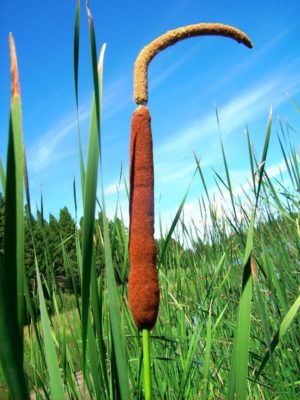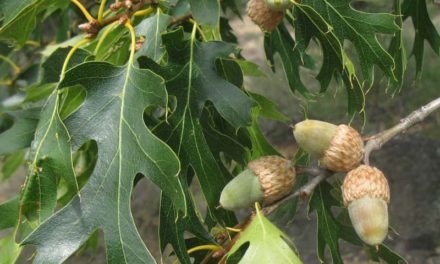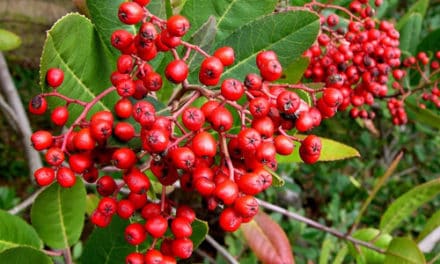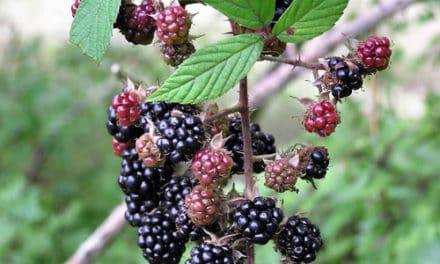By Jim Moore, Entomologist
When I first made my home in the Mountain Meadows Basin thirty-some years ago, I, like many new-comers to the Basin, began to acquaint myself with the wonders found within the surrounding woods and mountain meadows. My favorite explorations were along the shore line of Mountain Meadows Reservoir, also called Walker Lake by the local folks. This is where I had my first close observations of the curious looking Cattail. Occasionally I would cut some brown cattails and bring them home for use in dried flower arrangements.
The wildlife, plants and animals, in and around the lake was then, and still is, very species diverse and abundant. One thing I remember is that the more serpentine shoreline along the  north shore of the lake was much easier to walk along than it is now. Nowadays, the cattails, and to a lesser extent the bullrushes, have extended their range in many locations along the shallow shoreline, restricting direct access to, and visibility of, the lake.
north shore of the lake was much easier to walk along than it is now. Nowadays, the cattails, and to a lesser extent the bullrushes, have extended their range in many locations along the shallow shoreline, restricting direct access to, and visibility of, the lake.
All these cattails growing in and along the shore no doubt provide more extensive, and safe, habitat for birds and other animal life. Various seasonal parts of the cattail plant: roots, seeds, leaves, and stems, also provide food for various animal species.
This native cattail, species Typha latifolia, that grows up here in the mountains, and in our valleys, is also native throughout North America and Europe, and in various locations in South America, Asia, and Africa! Since the earliest of times, folks in all these regions have utilized the various parts of the cattail plant as versatile source material for many useful products: baskets, hats, mats, bedding, shelters, pillow stuffing, insulation for warmth, tinder for starting fires, as well as various medicinal uses. The value of cattail as a reliable wild source of food was especially important for many pre-farming cultures.
Within our Mountain Valley aquatic domains cattails are quite common. When the first people to settle in Northern California arrived thousands of years ago the abundant cattail-bulrush tule marshes to be found would have been a very welcome, but not a new, source of food. In the early spring the young tender shoots of leaves and stems provided an important source of greens. Later in the early summer the upper and lower part of the flower stalk, the cattail, were harvested while still green and boiled and eaten, kind of like corn on the cob. Later still, the protein rich pollen from the upper part of the flower stalk, was harvested and added as a supplement to other food. Finally, after the cattail plants had turned brown during the fall and winter seasons, the thick underground nutrient rich rhizomes were also harvested and eaten, or processed into a dried flour and stored for future use. The brown seed bearing “cattail” was not used as a source of food.
These days the “Supermarket of the Swamp” as some have called the cattail, is rarely utilized as a wild food source. Also, unlike pine nuts, dandelion leaves, morel mushrooms, and crawdads, you will not find any part of the cattail in our modern supermarkets. Cattails just do not register high on the human palate these days any more.
However, for the adventurous, including parents who might want to acquaint their kids with an important wild food source of ancestors of long ago, harvesting some wild cattail food might be an interesting and educational experience. Cattail should only be harvested from the cleanest water habitats, and permissions from land owners may be required. There are numerous websites explaining how to harvest, cook, and eat cattail.
Also, cut and take home a few fully mature brown cattail heads for your kids; they just love to have sword fights with them; outdoors of course!











